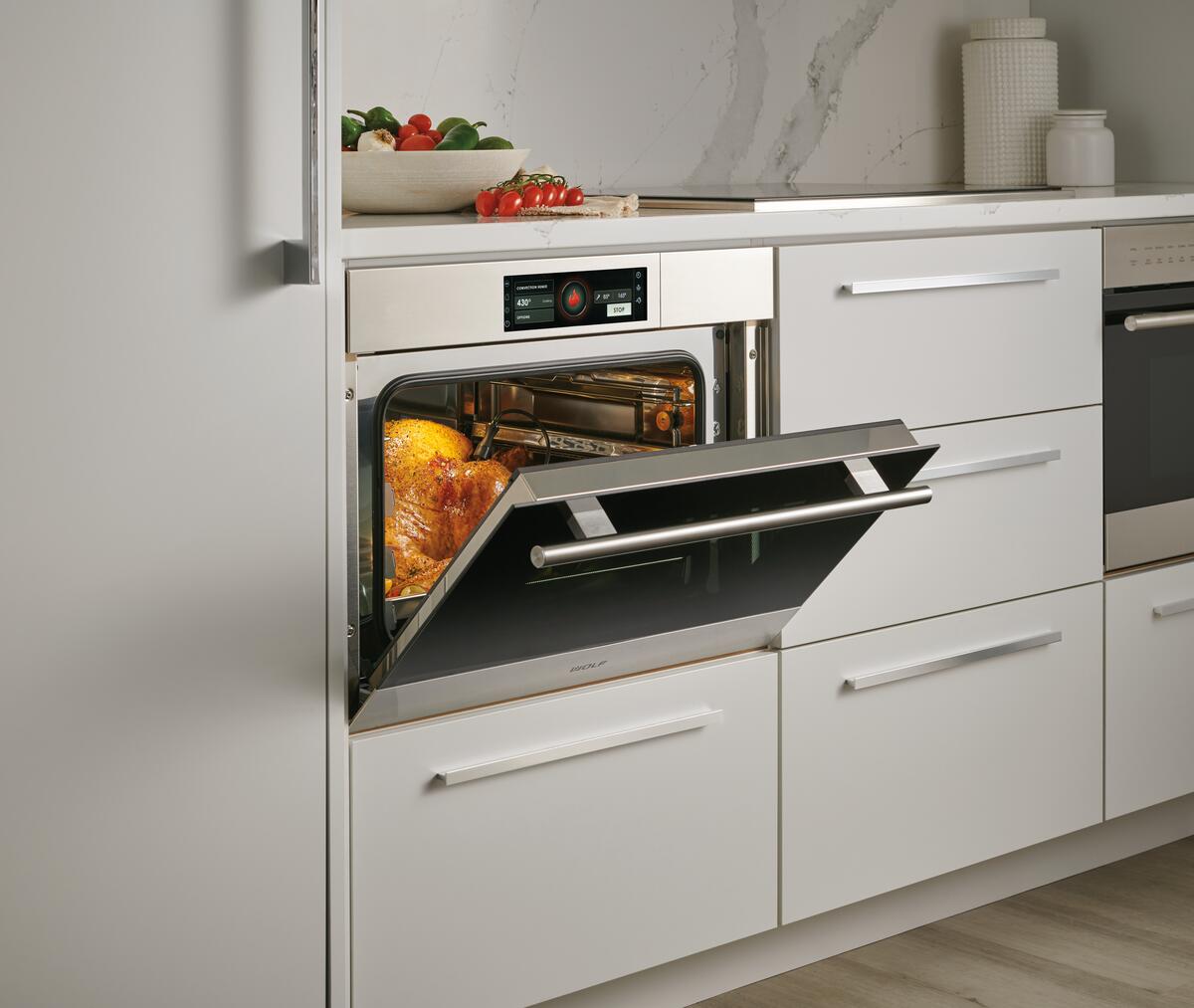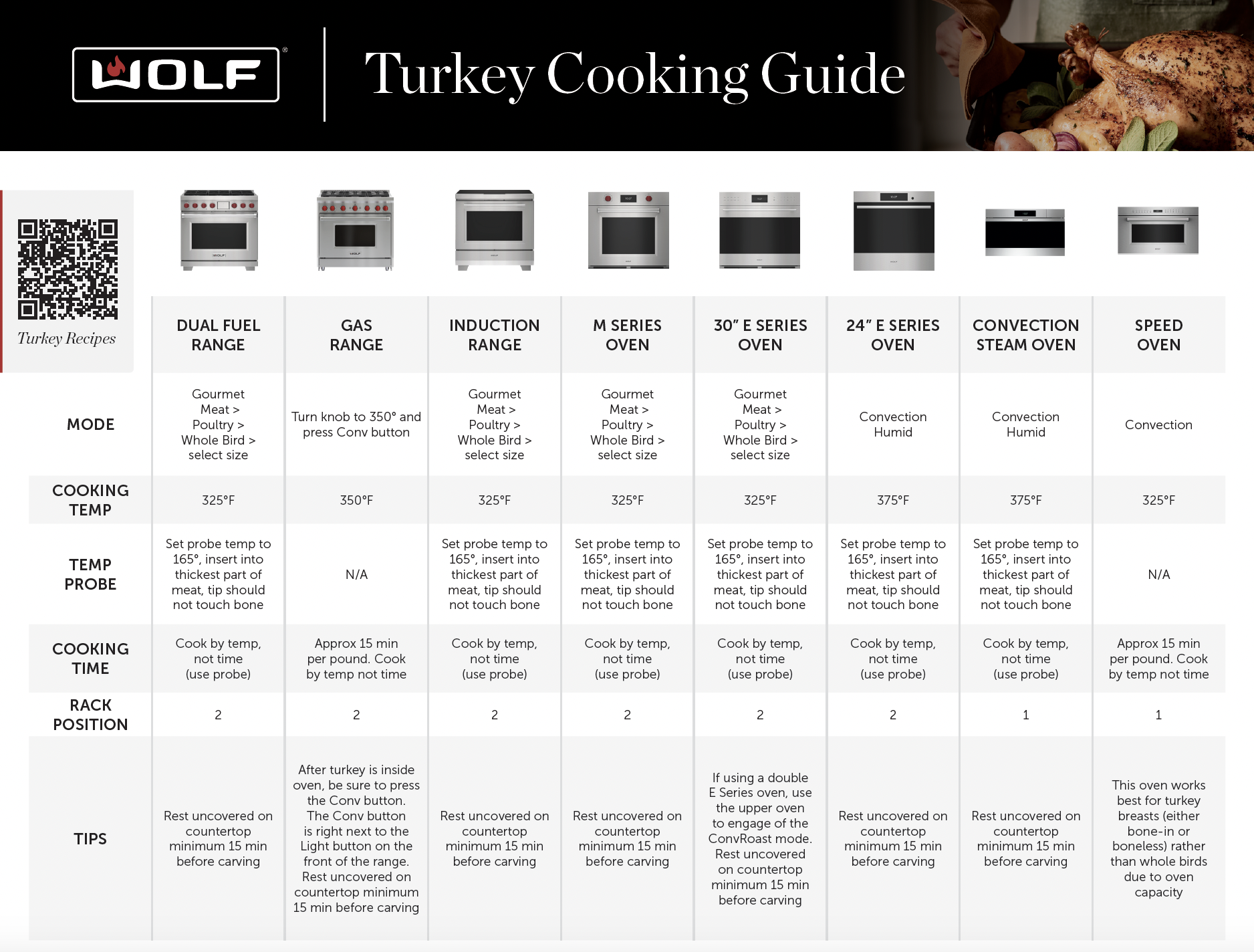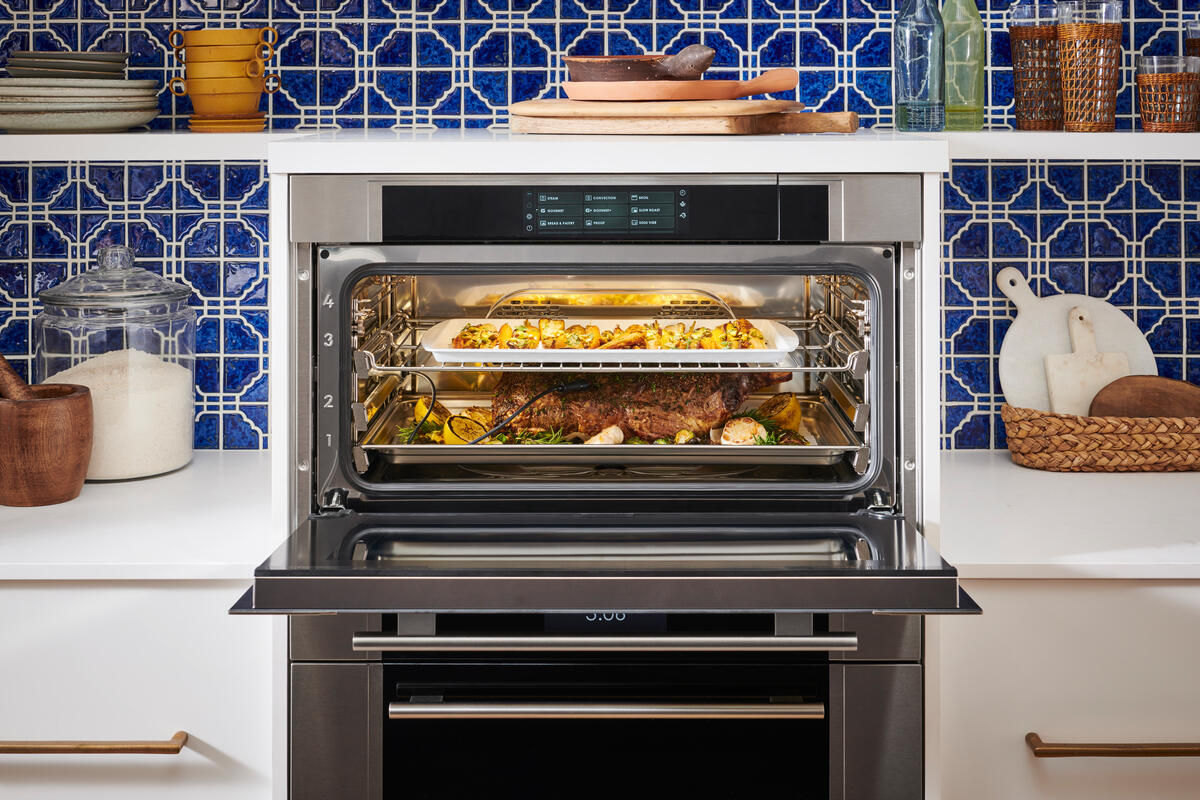Wolf Ultimate Turkey Cooking Guide
The Ultimate Guide to Thanksgiving Turkey & Holiday Prep
Cooking a Thanksgiving turkey can feel daunting, but with steam and convection ovens, you have powerful tools to elevate the feast. These ovens allow you to cook with precision, lock in moisture, and bring out the best flavors. Here’s a guide with chef-approved tips for using steam and convection ovens to make this Thanksgiving your best yet.
Mastering the Thanksgiving Turkey: Tips for Steam and Convection Cooking
Using a steam oven or convection oven for Thanksgiving provides unique advantages. With convection, the circulated hot air ensures even cooking throughout, while steam keeps meat juicy and tender. Chef Pawel of Sub-Zero/Wolf Midwest explains, “Steam ovens are incredible for keeping proteins like turkey moist, even during long cooking times, while convection ovens are ideal for achieving a golden, crispy skin.” Here’s how to combine the best of both techniques.
Two Weeks Before Thanksgiving: Plan Ahead for Perfect Results
1. Pick the Right Bird
Start by ordering a fresh turkey or buying a frozen one to store. A fresh turkey works well in steam and convection ovens, as it retains natural moisture, but frozen works too if it’s thawed properly. Plan for one pound per person. If you have more questions, visit here to view Wolf’s breakdown of the top ten Turkey questions answered, and more tips, tricks, and recipes.
2. Choose Your Flavor Profile
Consider a herb and citrus mix for a light flavor, or go for garlic, sage, and thyme for a more classic taste. Infuse herbs and aromatics under the skin and inside the cavity for depth. Chef Marissa Lange recommends, “With steam and convection cooking, you want flavors that penetrate deeply since steam enhances natural flavors.”
The Day Before: Season and Prep
5. Season Thoroughly
Season your turkey inside and out. For a steam oven, this step is critical to bring out flavors. Rub the turkey with butter or oil mixed with your spices. Chef Pawel states, “Steam ovens really bring out the flavors in spices and aromatics, so take advantage of it.”
6. Set Cooking Times and Temperatures
In a steam oven, a temperature of 275°F to 300°F is optimal. Convection ovens typically need a higher temperature for crisping; start at 375°F. Keep cooking times a bit shorter with convection to avoid drying out the meat.

Cooking Day!
7. Begin with Steam Cooking
For a steam oven, set the turkey to cook at a lower temperature with a high steam setting. Start with 275°F and steam for about two hours (for a 12-14 lb. turkey). The steam will tenderize the meat and retain its moisture. Check periodically to ensure the water reservoir is full.
8. Switch to Convection for a Crispy Finish
Once the turkey reaches about 145°F in the thickest part, transfer it to a convection oven set at 375°F, or if using a steam-convection combo oven, switch to convection mode. This finishing stage gives you the golden, crispy skin while locking in moisture.
9. Use a Meat Thermometer
A digital meat thermometer is essential for both oven types. Turkey should reach an internal temperature of 165°F in the thickest part of the breast and thigh.
10. Rest Before Carving
After cooking, tent the turkey with foil and let it rest for 20-30 minutes. This step allows juices to redistribute. Chef Pawel says, “Resting makes a huge difference – it’s what gives you those perfect, juicy slices. If your instinct says lets cut it, leave it another minute.
Also – Here is Wolf’s Turkey Cooking Guide for each appliance specifically!

Chef Tips to Perfect Your Feast
Add a Steamer Basket for Aromatics
In a steam oven, add a small steamer basket with herbs like rosemary and sage to enhance aroma as the turkey cooks. These subtle flavors will permeate the meat without overpowering it.
Baste for Extra Flavor
Convection ovens cook quickly and evenly, so basting is optional, but steam ovens benefit from occasional basting with melted butter or stock for added flavor.
Try a Citrus Glaze
A last-minute glaze with orange, lemon zest, and honey can add a beautiful shine. Brush on during the last 10-15 minutes for a caramelized finish.
Bonus: Side Dishes to Complement Steam and Convection Cooking
Take advantage of your ovens’ features for other Thanksgiving dishes:
Roasted Vegetables in Convection: Convection ovens are fantastic for roasting vegetables like Brussels sprouts or carrots. Toss them with olive oil, salt, and herbs, and roast at 400°F for a crispy, caramelized side.
Steamed Green Beans: Steam ovens are perfect for vegetables that need a tender texture without losing moisture. Steam green beans or asparagus for about 5 minutes, then finish with a drizzle of olive oil and toasted almonds.

Chef Tips for Cooking Turkey with a Steam Oven
Cooking turkey with a steam oven can help you achieve an incredibly juicy result while maintaining a beautiful browned exterior. Here are some expert tips:
- Preheat & Prep: Steam ovens are a great choice for roasting because the humidity level keeps meat from drying out. Preheat the oven, insert the probe, and set your desired temperature for a perfectly cooked turkey every time.
- Let It Rest: Always rest the turkey for 15-20 minutes before carving to allow the juices to settle.
- Flavor Infusion: Use the steam oven’s gourmet modes to enhance the flavor profile, making sure the bird absorbs any herbs or spices you’ve used in your recipe.
- According to Chef Pawel of Sub-Zero/Wolf Midwest, when you think its ready, always let it rest another moment longer. Us that are not chefs tend to flip, cut, etc before the dish is ready.
Final Touch: Bringing It All Together
Thanksgiving is about creating a feast that brings family and friends together. With these tips, your steam and convection ovens can help you achieve perfectly tender, flavorful turkey and side dishes that are simple yet delicious. And remember, if you’re balancing multiple dishes, steam and convection ovens make it easy to achieve professional results with less fuss.
Happy Thanksgiving, and may your kitchen be filled with the warmth, joy, and delicious scents of the season!
